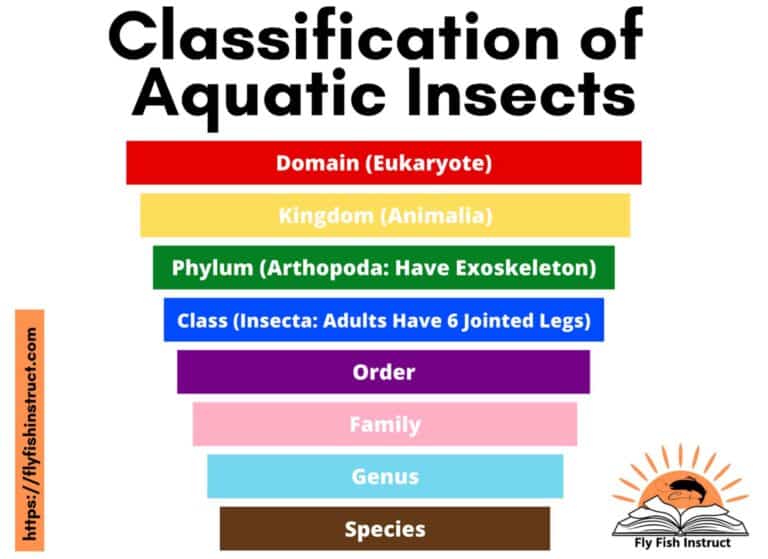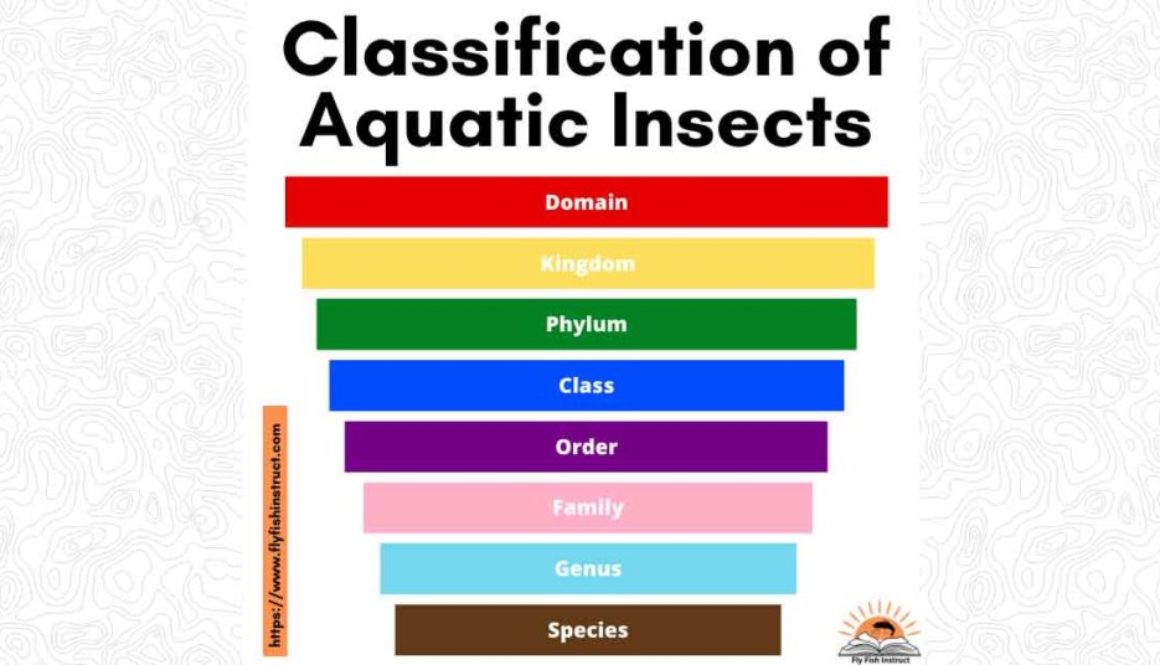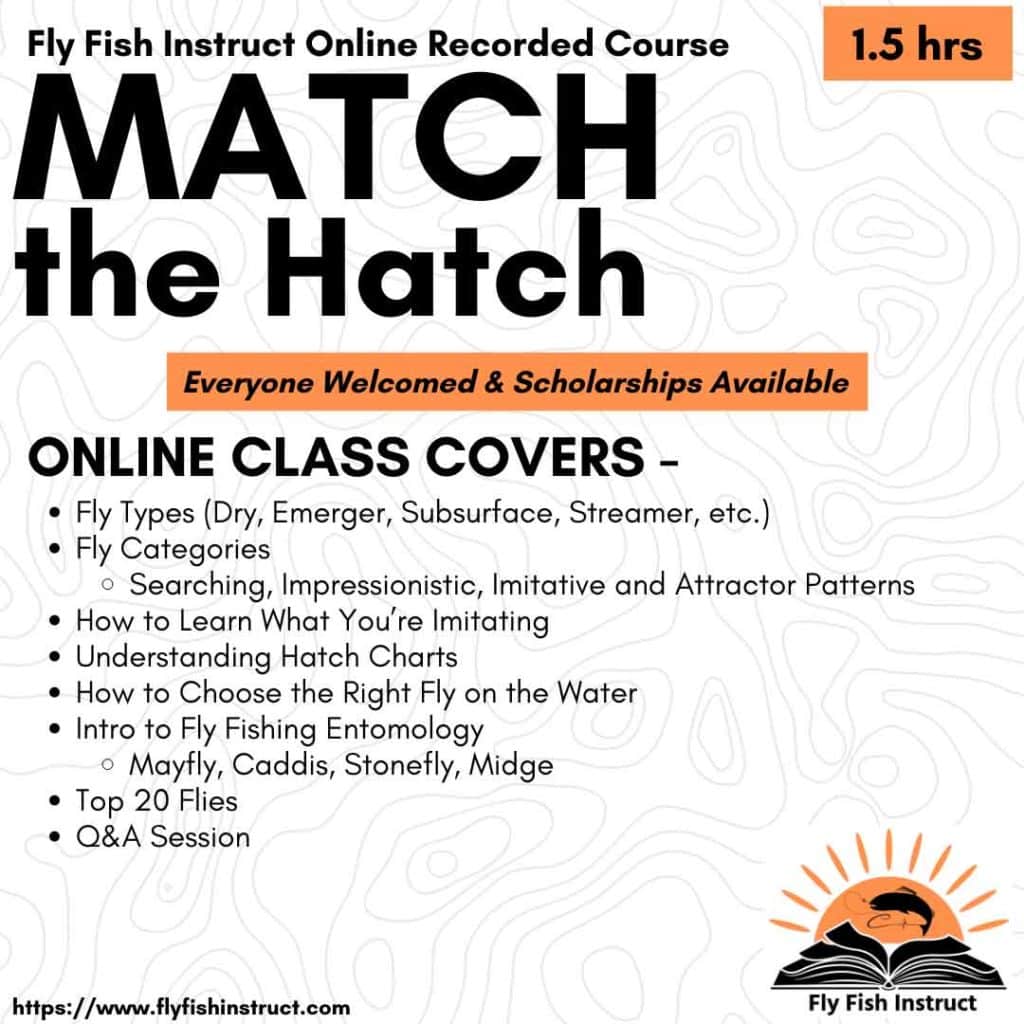Classification of Aquatic Insects
Blog, Education, Entomology, Trout Classification of Aquatic Insects, Match the Hatch

By: Heather Hodson and Megan Hess
Fly fishing allows us to get as nerdy as we’d like with almost every aspect of the sport. For some, it’s just a time to get outside and feel the effects of nature. For others, it’s about narrowing down an aquatic insect’s specific species and stage to fish the exact imitative fly pattern.
In the “Match the Hatch” Fly Fish Instruct online course, we want to appease all nerdiness scale spectrums. Let’s dive deeper into how aquatic insects are scientifically classified and what that means to us as anglers.
Disclaimer – We use common names for a similar group of aquatic insects. Example: When we say Blue Wing Olive, we are referring to the genus Baetis which encompasses more than 150+ mayfly species.


Classifications of Living Things
Scientists classify living things based on their shared traits. In addition to identifying each different kind of organism, classification can help us understand how living things are related. Scientists start at the most broad group (kingdom) and end at the smallest group (species).
Classification Types:
- Domain
- Kingdom
- Phylum
- Class
- Order
- Family
- Genus
- Speciesbro
- Genus
- Family
- Order
- Class
- Phylum
- Kingdom
Same Domain, Kingdom, Phylum and Class
All aquatic insects are classified the same until order.
- Domain – (Eukaryote)
- Kingdom – (Animalia)
- Phylum – (Arthropoda) Have Exoskeleton
- Class – (Insecta) Adults Have 6 Jointed Legs
Order
The order is another way to break down the Insecta class further. Think of it as “refining your search” for a specific type of aquatic insect.
Most Common Trout Fly Orders:
- Diptera – Flies (Midge)
- Ephemeroptera – Mayfly
- Plecoptera – Stonefly
- Trichoptera – Caddis
Family
The next level in the classification of living organisms is much like the people we call family. We are all different, but we share enough similarities that we belong to the same family; the same applies to all living things. Tip! You can identify an aquatic insect’s scientific family name because it will always end in “dae”. The family is usually some variation of the “genus name” + “dae”.
Examples of Aquatic Insect Families –
- Baetidae – Small Mayflies
- Chironomidae – Midge
- Pteronarcyidae – Large Stoneflies or “Salmonflies”
- Rhyacophilidae – Free Living Caddis
Genus
The genus is the first part of a living thing’s scientific name, known as binomial nomenclature.
Examples of Common Genus –
- Baetis – Blue Wing Olive
- Rhyacophila – Green Sedge Caddis
- Pteronarcella – Salmonfly
- Chironomus – Bloodworm – Red Larva Midge
Species
The species is the final and most specific level of the classification system. There are usually several to hundreds of different species for each genus. Unless you are super nerdy into insects, hardly ever do anglers refer to the individual species of an insect because it is usually too hard to identify to that level while out fishing and not under a microscope. Sometimes the difference between a species is the number of hairs on their forearm! As anglers, often we refer to the insect’s common name that encompasses the genus that they are within.
Number of Species For Each Genus –
- Blue Wing Olive – 150+ Species
- Green Sedge Caddis – 125+ Species
- Salmonfly – 2+ Species
- Bloodworm – Red Larva Midge – 90+ Species
Conclusion
It’s not necessary to know the scientific species of an aquatic insect, but it’s helpful to be able to identify the order and genus. Start with a quick research of these specifics, and you’ll be a step ahead in choosing the right fly to match the hatch. Happy Fishing.




